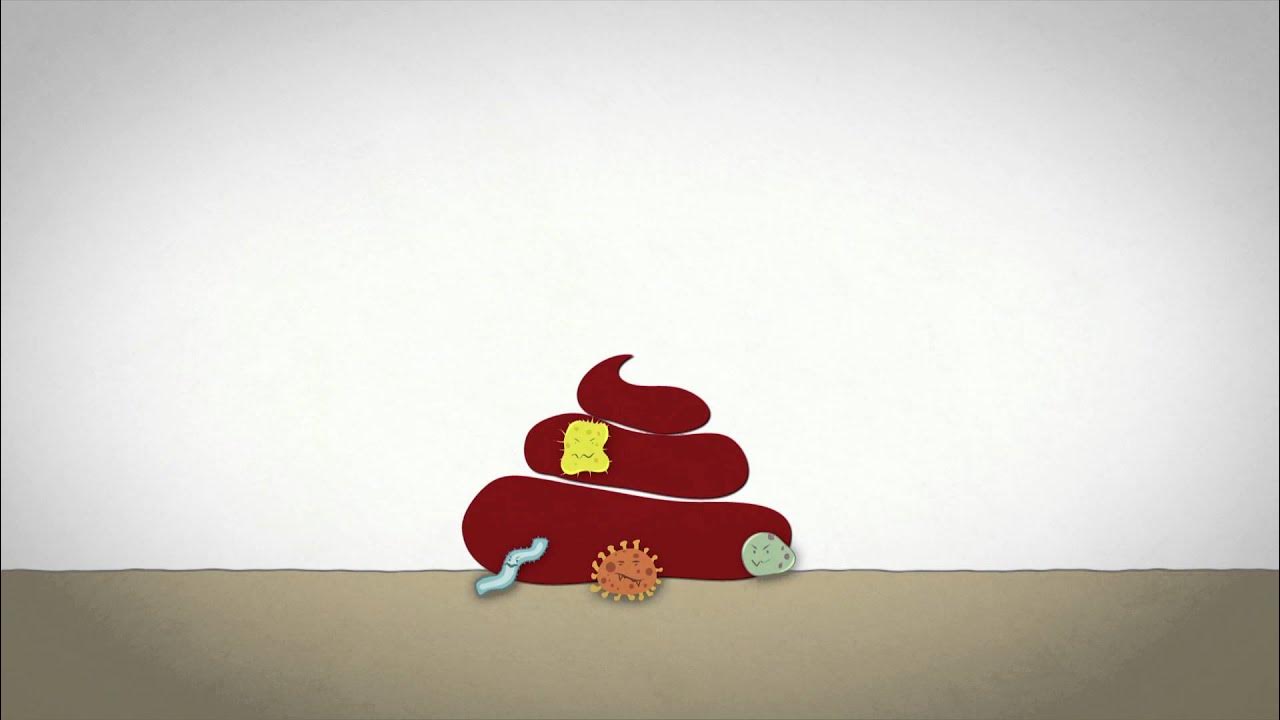CLTS - Unicef - Somalia - 2015 (ENG)
Summary
TLDRThe video details the Community-Led Total Sanitation (CLTS) approach, which aims to address open defecation in Somalia. The process involves a series of steps, from pre-triggering to certification, aimed at changing behaviors around sanitation and hygiene. Through mapping, community discussions, and exercises, participants are made aware of the health risks of open defecation, leading to commitments to build latrines and reduce fecal contamination. The approach promotes self-mobilization, encourages women's participation, and focuses on long-term sustainability. Ultimately, the goal is to help communities become open defecation-free, improving overall health and hygiene standards.
Takeaways
- 😀 Only 39% of Somalia's population has access to sanitation, contributing to health problems like diarrhea and malnutrition.
- 😀 Diarrhea, related to water and sanitation, is a leading cause of death in children under five in Somalia (19% of child deaths).
- 😀 The Community-Led Total Sanitation (CLTS) approach focuses on changing behavior and raising awareness about open defecation's health risks.
- 😀 CLTS involves multiple stages: pre-triggering, triggering, post-triggering, and scaling up, all aimed at community-driven solutions.
- 😀 The approach encourages communities to understand the links between hygiene, health, and the environment through self-analysis and discussion.
- 😀 During triggering, communities map their village and calculate the amount of feces produced, highlighting the scale of the sanitation problem.
- 😀 Facilitators encourage participants to reflect on the consequences of open defecation, helping them realize its dangers to health and the environment.
- 😀 Women and marginalized groups are encouraged to participate in the sanitation process, ensuring a more inclusive and sustainable outcome.
- 😀 Communities commit to building or rehabilitating latrines during the triggering session, with responsibilities clearly defined for each action.
- 😀 After certification, ongoing support and monitoring are essential for maintaining open defecation-free (ODF) status and ensuring sustainability.
- 😀 CLTS promotes long-term behavior change, involving continuous engagement and the creation of a local sanitation market to meet household needs.
Q & A
What is the main sanitation-related illness mentioned in the script?
-Diarrhea is the key water and sanitation-related illness mentioned in the script, and it is closely associated with malnutrition.
What is the CLTS approach, and what does it aim to address?
-The Community-Led Total Sanitation (CLTS) approach is focused on changing behavior in communities regarding open defecation. It aims to eliminate open defecation by engaging the community in a participatory process that raises awareness about the health risks and encourages action to improve sanitation.
What are the key steps involved in the CLTS process?
-The key steps in the CLTS process include pre-triggering, triggering, post-triggering, and scaling up. Each step focuses on different activities such as baseline surveys, mapping, discussions about hygiene, and monitoring progress.
Why is the facilitator's role important during the triggering session?
-The facilitator plays a crucial role by helping the community realize the health risks of open defecation. Through exercises like mapping and discussions about feces, the facilitator encourages participants to reflect on the negative impact of open defecation and motivates them to take action.
What kind of activities are conducted during the triggering session?
-During the triggering session, activities include mapping the village, calculating the amount of feces produced, and walking around the community to identify open defecation sites. These activities aim to raise awareness and provoke a sense of disgust and shame to motivate change.
How does the CLTS approach encourage community involvement?
-CLTS encourages community involvement by facilitating self-mobilization, promoting discussions where everyone, including women and poorer sections, can voice their opinions, and by recognizing and engaging community leaders to lead sanitation initiatives.
What is the role of the sanitation and hygiene committee in the CLTS approach?
-The sanitation and hygiene committee is responsible for following up on the community's progress toward achieving Open Defecation Free (ODF) status. They ensure that the commitments made during the triggering session are being carried out and help sustain sanitation improvements.
How does the certification process work in the CLTS approach?
-The certification process involves evaluating the progress of villages to see if they have met the criteria for ODF status. This includes surprise verification visits, community involvement in inspections, and checks for sustainable sanitation practices.
What are some challenges mentioned regarding the sustainability of the CLTS approach?
-One major challenge is ensuring the long-term sustainability of the behavior changes made during the CLTS process. After certification, communities need continuous support to maintain and scale up sanitation practices, including promoting sanitation markets to meet household needs.
How does the CLTS approach help raise awareness of hygiene and sanitation?
-The CLTS approach raises awareness through participatory activities such as mapping, walking around the community, and engaging villagers in discussions about hygiene, health risks, and the importance of sanitation. These activities lead to a collective understanding of the issues and encourage change.
Outlines

This section is available to paid users only. Please upgrade to access this part.
Upgrade NowMindmap

This section is available to paid users only. Please upgrade to access this part.
Upgrade NowKeywords

This section is available to paid users only. Please upgrade to access this part.
Upgrade NowHighlights

This section is available to paid users only. Please upgrade to access this part.
Upgrade NowTranscripts

This section is available to paid users only. Please upgrade to access this part.
Upgrade NowBrowse More Related Video

Video 5 Pilar STBM (Sanitasi Total Berbasis Masyarakat)

Lack of water, sanitation and hygiene (WASH) and its effects on nutrition

The EXPLAINER, Community-Led Total Sanitation (CLTS)

The surprising truth of open defecation in India | Sangita Vyas | TEDxWalledCity

Francis de los Reyes: Sanitation is a basic human right

Sistem Pengolahan Air Limbah Domestik (SPALD)
5.0 / 5 (0 votes)